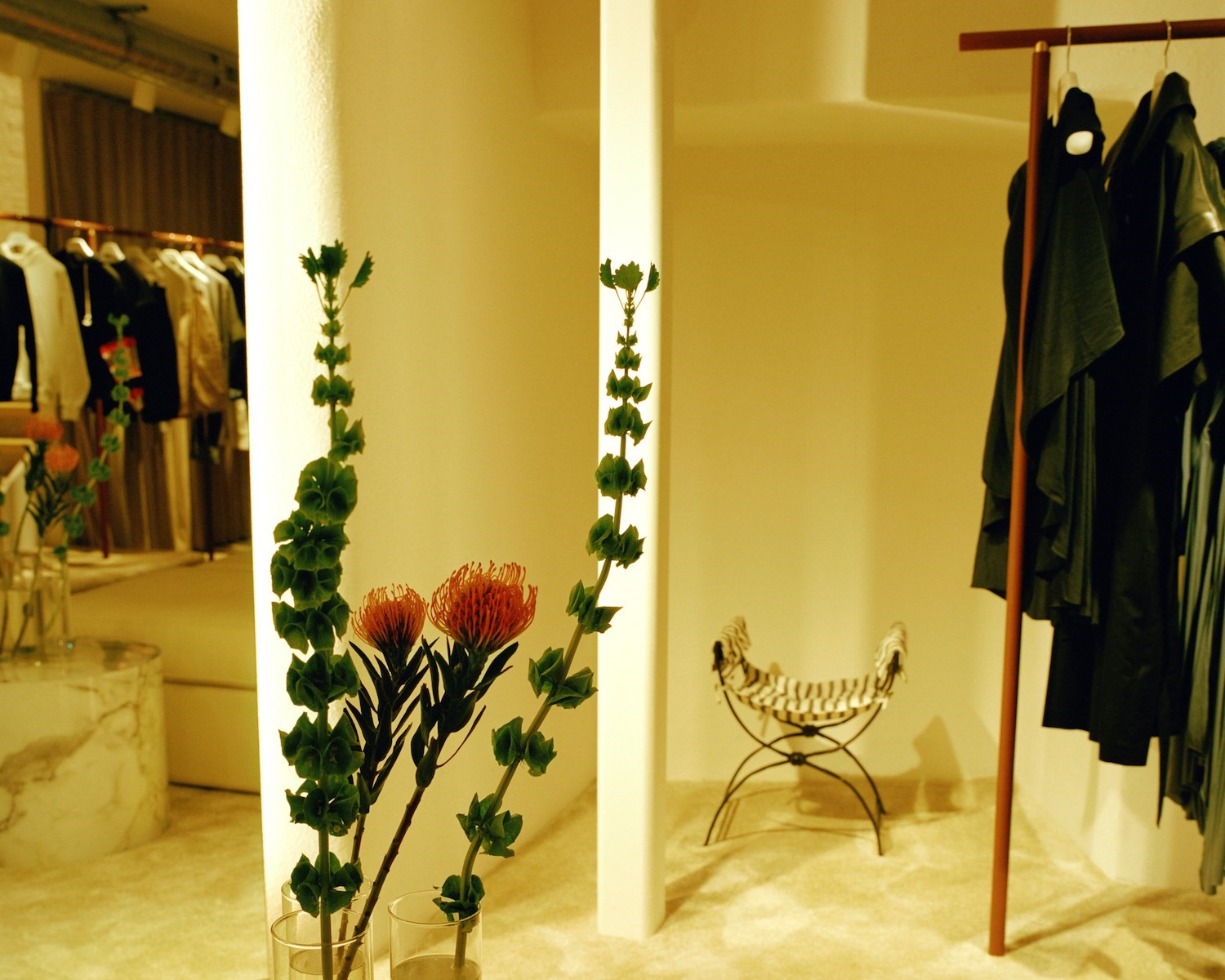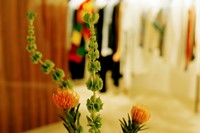It’s a Thursday afternoon in Soho, London, and Jonathan Anderson is in good spirits – despite the end-of-days atmosphere bubbling up in fashion, and around the globe, since the outbreak of Covid-19. We are in the basement of JW Anderson’s first flagship store, which is set to open that evening, as, across the world, businesses begin to shutter. “There’s a sort of new doom phenomenon,” Anderson says of the increasingly apocalpytic mood. “A lot of people asked me ‘Well, why open a store?’ I’m opening a store because I feel I want to open a store.’”
Later that night, festivities will go ahead uninterrupted, spilling out from the store – a corner spot in the epicentre of Soho, where Brewer Street and Wardour Street meet – into Martha’s, a bar across the road. Drag queen Baga Chipz – runner-up of the UK edition of RuPaul’s Drag Race – is the evening’s surprise guest, performing a raucous tribute to tabloid favourite Kerry Katona. “There is this kind of hard-as-nails attitude,” Anderson said of Soho’s denizens earlier in the day. “Think of the bold real-estate guy, or the woman who works Maison Bertaux, or the guy who works in the pub. It’s as if they say, ‘We’ve seen all this, and we will get through.’”
Anderson had been looking for a space in the area for over a year; the neighbourhood seemed a more natural fit for JW Anderson, which he deems a “cultural agitator”, than the gilded shopping avenues of Kensington or Mayfair. (“One is there to create anarchy and the other is there to distil it,” he told Susannah Frankel of the different between his own eponymous label and Spanish luxury house Loewe, where he is creative director, and whose art-filled flagship is on Bond Street.) They had briefly considered a shuttered bagel shop, which was too small, before the store’s now-location was discovered by Anderson’s brother. “I had always wanted a corner spot,” Anderson says. “So I just said, ‘let’s do it.’”
The 1,300-square-foot space combines two previous stores, one of which was a late-night newsagent that Anderson bought cigarettes from (a slither of its original checkerboard floor remains on the store’s upper level) in his twenties. For its transformation, Anderson drafted London-based architecture studio 6a, who he worked with on the installation for Disobedient Bodies, the multidisciplinary exhibition he curated at The Hepworth Wakefield in 2017. Their pitch for the store had included a photograph by Turner Prize-nominated artist Anthea Hamilton; Anderson, who at Loewe worked with Hamilton on the costumes for her immersive installation at Tate Britain, owned the image, unbeknown to 6a. “I love her,” says Anderson. “So when I saw that I was like ‘It’s done, it’s signed off.’ That is the joy of collaborating with someone, it’s all about trust.” (Hamilton’s photograph now sits on the wall of the store.)
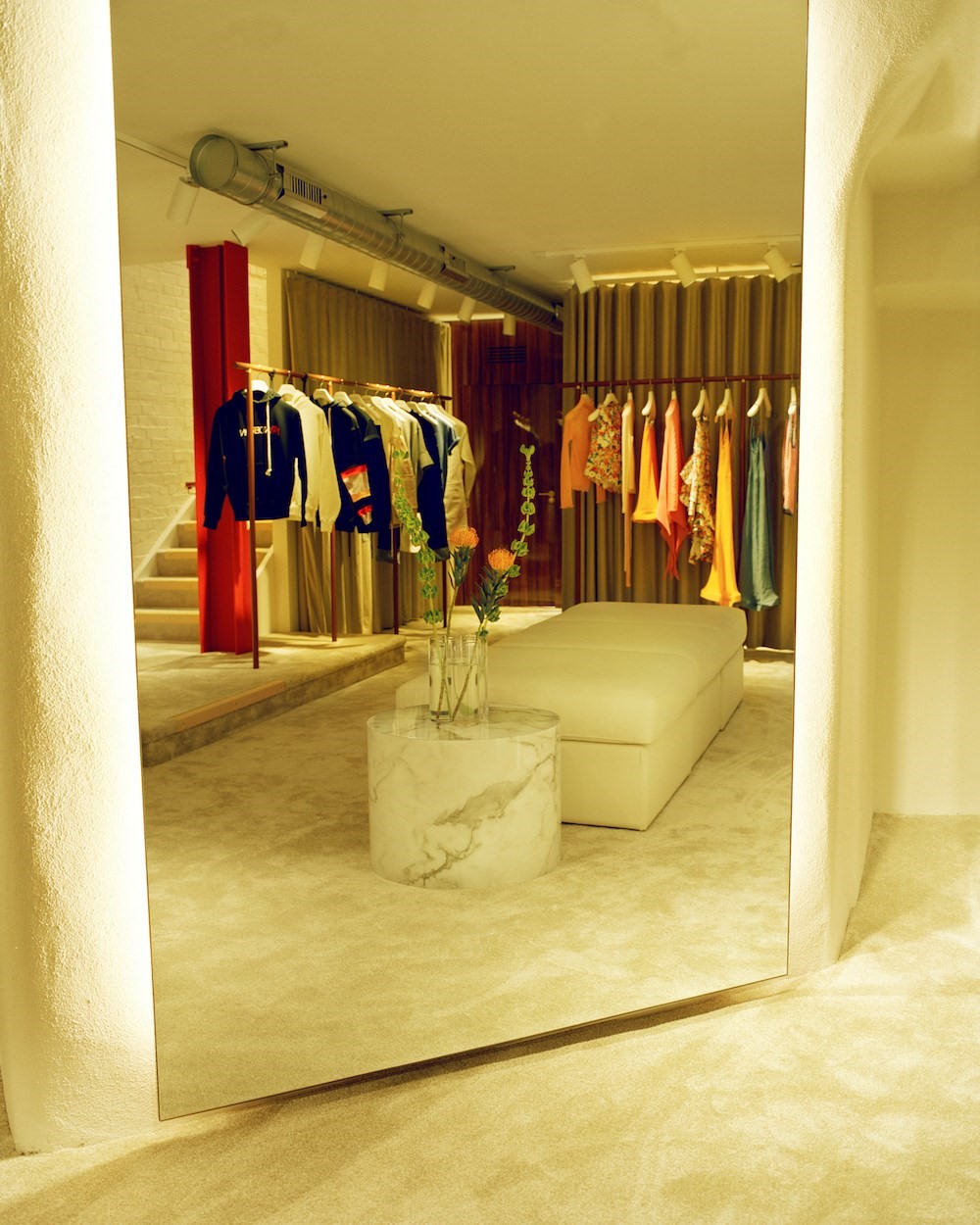
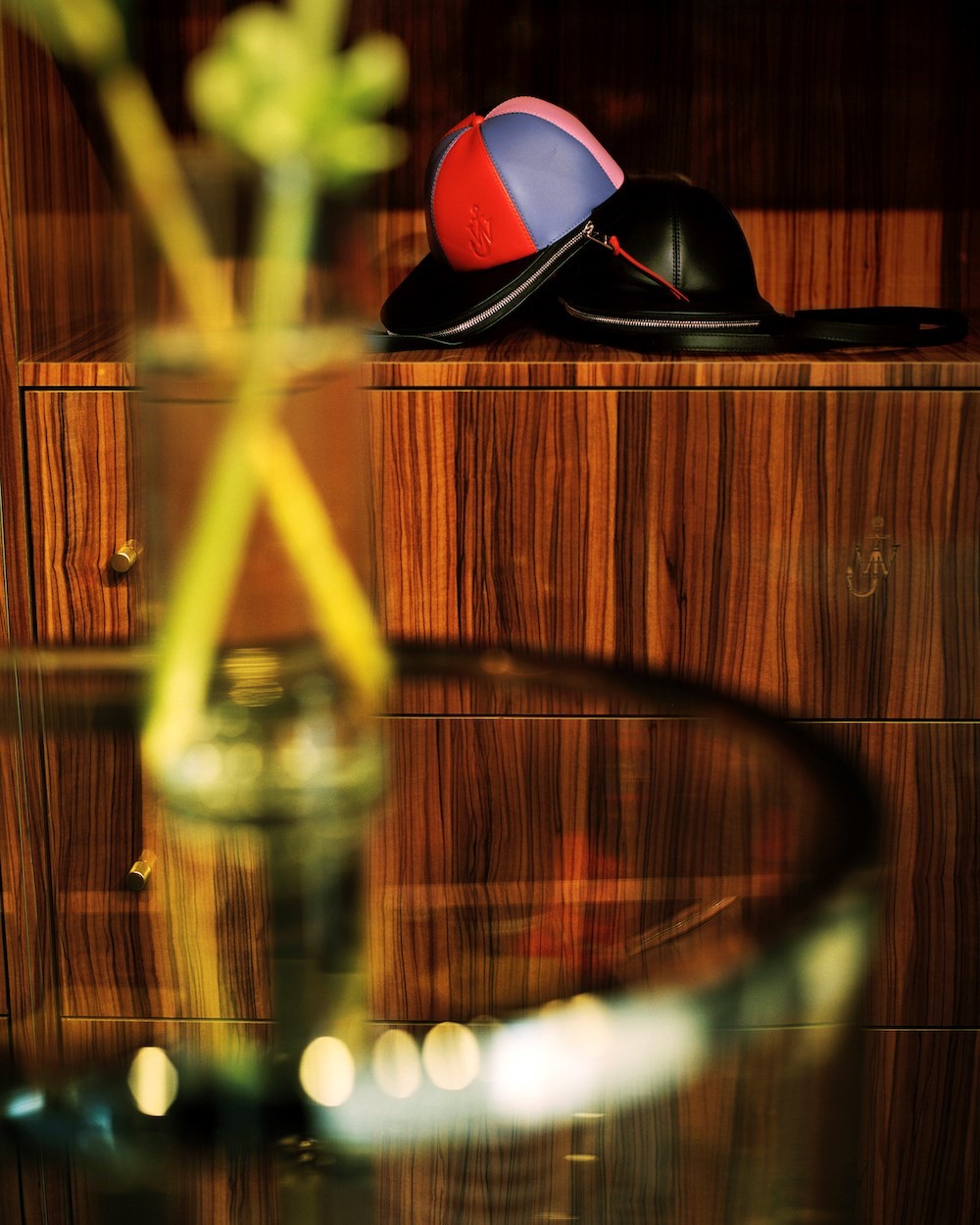
“Once we visited the site and met at this corner, we immediately thought it was a very charged spot,” says 6a co-founder Tom Emerson. “To the south is Westminster, the government and the establishment, and to the north is where rebellion has always happened. Soho is where establishment and counter-establishment meet – that’s why it’s always changing.”
For this reason, when designing the store, it felt important to retain a sense of the street: large upper windows on the store’s two external sides demolish the divide between those outside and in (“It sort of feels as if you could grab a bag from the window somehow,” says Anderson), while a neon-light marquee of the label’s name and monogram nod to the glimmering slot-machine aesthetic of the gaming casino next door. Aluminium fluting, also on the store’s facade, pays homage to the Italian cafes which once populated the area. Inside, some elements of the original Victorian building remain, some are replicated, others entirely replaced.
“Soho has continually rebuilt itself over the years. People here just know they have to make it work, no matter if it’s good or bad, no matter if the rents goes through the roof” – Jonathan Anderson
“If you look, it’s the most ridiculously shaped plan,” laughs Emerson. “It’s not like a big square or a retail space where you can nominate how many racks you have of this and that.” It meant working intuitively with what was already there; Anderson wanted to reject the impulse to clear the space into a white box. His favourite element of the store is a small alcove, hidden above a rack of clothing on the lower floor, which will eventually house a single small ceramic pot (the right one has yet to arrive). The renovation project lasted six months, a relatively brief period by usual standards. “We were working in an incredibly efficient way,” says Emerson. “It was an incredibly organic and linear process.”
The downstairs of the store – which will carry all of JW Anderson’s mens- and womenswear, accessories, and collaborations, including the recent Moncler Genius capsule – has a more intimate feel, helped by a luxurious high-pile cream carpet. “When you’re upstairs, you feel like you’re in the middle of Soho, just without sound,” says Anderson. “When you come downstairs, you wouldn’t know you were in Soho. It feels flattering somehow, your eyes feel as if they’re more relaxed, you’ve got the softness on the floor, you feel as if you could walk around in your socks. It makes you feel as if you want to reveal yourself and kind of try things on.”
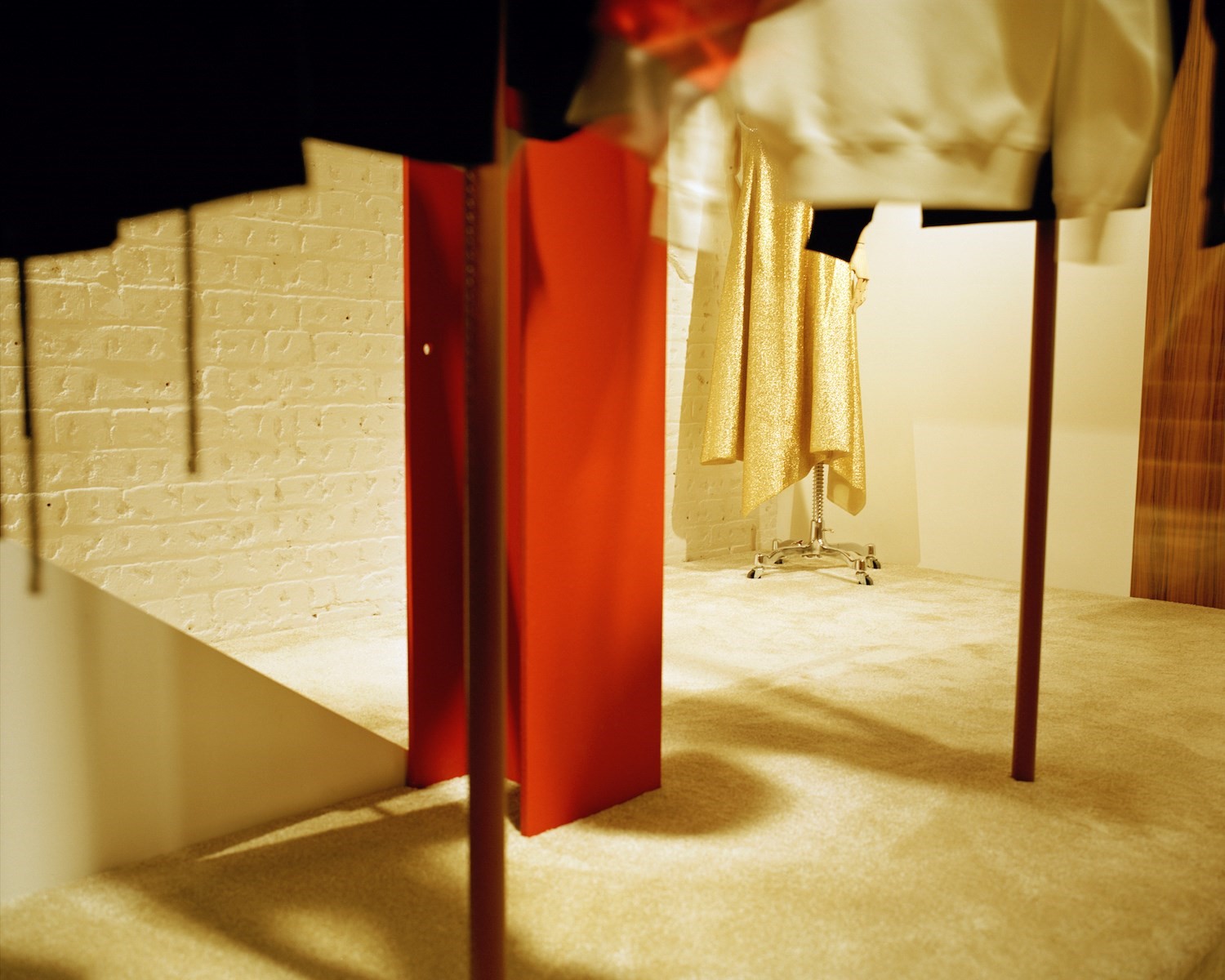
I ask Anderson why a physical space remains important as digital retail continues to grow. “I think this idea that retail is over because of e-commerce is one of the biggest urban legends, because ultimately good retail will always work,” he says. “As much as we live in a digital world, we are always going to want a tangible reality; we want to be able to touch things, it’s a natural process of being a human being. We actually came up with quite a good analogy about Soho and shopping: you can get a lot of pornography online, but people will always come to Soho to get pornography.”
What good retail comes down to, Anderson says, is atmosphere. Luckily, atmosphere is in abundance in Soho, which has long provided a haven for those living life on the margins, particularly the city’s queer community. “You know, I grew up in Northern Ireland, so for me Soho was just abstract. You just don’t have that. It still feels very foreign to me,” he says. “It’s a complete melting pot of different cultures, and all different walks of life.” He compares it to a countryside village, supplanted in a city: there is community, and there is resilience. “I think there’s [something] very interesting in the moment that we are digressing into as a society, where the younger generation has become more obsessed by doom,” he says. “We’re going to be obsessed by what’s wrong, whereas when you talk to an older generation, there is an incredible resilience that proves that they’ve been here before.”
As for the store, which opens in what will prove a difficult time for retailers the world over, Anderson wants to claim this corner “for as long as we physically can”. “Soho has continually rebuilt itself over the years,” he says. “People here just know they have to make it work, no matter if it’s good or bad, no matter if the rents goes through the roof. There’s still that man who’s like, ‘I’m gonna still have my corner selling my DVDs!’”
“I want us to have the one person who comes in on a Saturday and always comes in, you know, at 11 o’clock, and sits and talks for two hours,” Anderson surmises. “At least then it becomes part of something.”
JW Anderson’s flagship store can be found at 2 Brewer Street, Soho, London, W1F 0SA.
